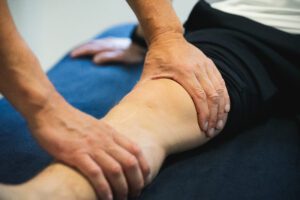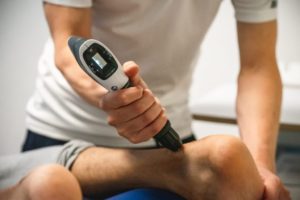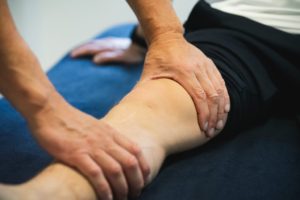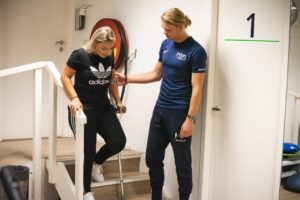An easy mnemonic for dealing with soft tissue injuries in the acute phase is the acronym RICE (rest, ice, compression, elevation), coined in 1978 by physician Gabe Mirkin.
However, this does not address the subacute and chronic phases of injuries. The British Journal of Sports Medicine featured a nice alternative! Namely: PEACE and LOVE.
Immediately after the injury occurs, the tissue needs peace:
- P for ''Protect''
Relieve the injured body part for 1 to 3 days so that optimal tissue recovery can occur. - E for ''Elevate''
Elevate the limb higher than the heart so that blood and fluid can drain easily. - A for ''Avoid anti-inflammatory modalities''
Inflammation is the body's natural response to repair damaged tissue. Inhibiting inflammation with medication can therefore negatively affect long-term recovery, especially when higher doses are used. The authors question cooling. Although cooling has an analgesic effect and is widely used, there is little scientific evidence about the effectiveness of cooling. Cooling may possibly disrupt the inflammatory process and lead to impaired tissue repair. Doctor Gabe Mirkin, mentioned earlier, also questions cooling. - C for ''Compress'' (compression)
External mechanical pressure can be applied by means of taping or bandaging. This helps limit movement of the joint and reduce edema and tissue bleeding. - E for ''Educate'' (education)
Providing information to patients provides more knowledge about what is going on and how to deal with the injury. The benefits of an active approach are often greater than a passive approach; better to do exercises than massage.
After a few days the tissue needs love:
- L for Load
An active approach with movement is better for recovery from the injury. Activities must
be resumed as soon as symptoms allow. Optimal load without worsening pain
promotes tissue repair. - O for Optimism (optimism)
Optimistic patient expectations are associated with better outcomes and prognosis.
Psychological factors such as catastrophizing, depression and anxiety can be an obstacle
forms for recovery. - V for Vascularization (vascularization = blood flow)
Optimistic patient expectations are associated with better outcomes and prognosis. Psychological factors such as catastrophizing, depression and anxiety can hinder recovery. - V for Vascularization (vascularization = blood flow)
Early mobilization and low to moderate intensity training (aerobic combustion) improve blood circulation, physical function and reduce the need for pain medication in people with injuries. - E for Exercise (practice or training)
There is strong evidence for the use of exercises to treat ankle sprains, for example. Exercises help restore mobility, strength and proprioception (feeling and coordination) after an injury. Pain should be avoided during the recovery phase and should be used as a guideline to increase the intensity of the exercises or to load them according to
the pain.
If you get injured, remember this mnemonic: PEACE and LOVE. Of course, you can always visit our sports physiotherapist in Rotterdam for advice!











